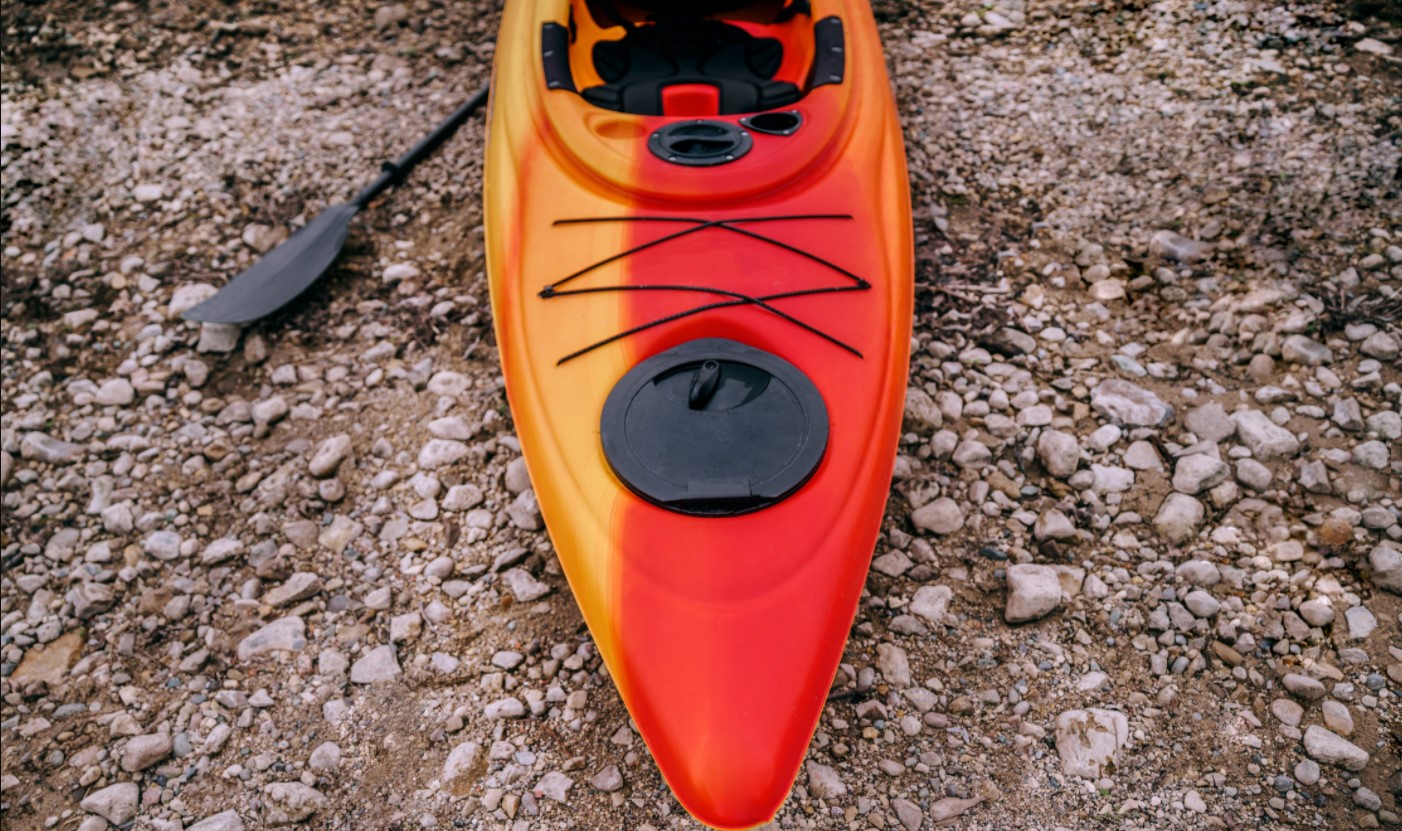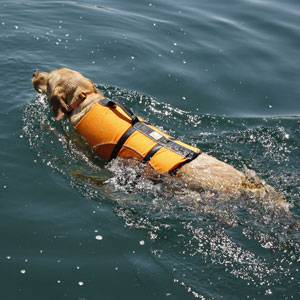Learning how to tie down kayak is something you usually do when you want to transport it. Generally, transporting a kayak isn’t that difficult, but there are some things you need to be aware of.
This article will show you how to properly load your kayak onto your vehicle and the steps required to tie it down, so it remains secure during transport.
Let’s begin!

Table of Contents
Effective Way to Tie Down Your Kayak
The most effective way of tying down your kayak to your vehicle’s roof rack is by using cam straps. With cam straps, you don’t have to worry about knots; all you have to do is simply put the straps through the buckles, cinching them in place.
You must make sure the kayak is centered aft and fore between your car’s crossbars. It should also be parallel to your car, as safety comes first.
By the way, you’ll want to read this if you want to learn how to keep your little one safe on the water.
How To Tie Down Kayak Using Cam Straps
- First, position your cam strap in a way that the buckle rests just a couple of inches above the kayak’s side. Toss the other end of the strap over the kayak.
- Walk to the other side of your truck, grab the other end of the cam strap and loop it under the cross back, tossing it back over the kayak. The strap must be on the inside, closer to where the crossbar meets the vehicle. Doing this ensures the strap doesn’t slip off the crossbar’s end.
- Take a walk back to the first side of the vehicle and loop the strap’s end under the crossbar so that it is in the cam buckle where you can cinch it down.
- Repeat this process with the other strap on the other crossbar.
- Make sure that all the straps used are not overtight but snug. If the straps have too much tension, they could cause your kayak’s fiberglass hull to crack and even deform your kayak’s plastic hull.
- Ensure that any loose ends are tied just below the cam buckles. If loose ends are remaining, you should slack them to the crossbars. Doing this provides additional support to the cam buckles, ensuring they do not start flapping about once you are on the road.
- Pull on either side of the kayak, shaking it back and forth to make certain it is indeed secure.
How to Tie Down Kayak Using Bow and Stern Straps
You could also use a bow and stern straps to ensure your kayak is securely tied down to your vehicle, particularly if you are going on the highway or heading into high winds. The easiest way to secure them to your kayak is by using a ratchet strap.
Here’s how to tie down kayak using a stern and bow strap:
- Install the bow and stern lines by hooking the line’s end to a secure point using the ratchet. The secure point is typically located on the kayak’s front.
- Attach the other end to a strong point on your vehicle. If there is no tow hook on your vehicle, add a hood loop strap. One thing you should not do is attach any tie-downs to the plastic areas of your vehicle.
- Tighten the line by pulling on the free end till it becomes snug. Make sure not to overtighten the line. If there are any loose ends of the line, tie them off near the ratchet. The same process can be used for the stern line.

How to Carry a Kayak
Now that you know how to tie down kayak, you still have to transport it either from its storage location to the car or from the car to the water’s edge.
The process is much simpler if two people carry the kayak. Here’s how to do it:
- One person grabs the end of the boat using the handle located at the stern, while another person does the same to the bow grab handle.
- Lift the boat together. The most effective way is to have both people face the same direction. This carry method is so effective that it can be used to carry two boats.
If you are by yourself, it is still possible to carry the kayak unless it’s in the heavy kayak class.
Here’s what you should do:
- Stand to the left of the kayak and face it.
- Squat to touch the grab handle located by the cockpit. Use both hands to pull the boat’s edge up to your thighs.
- Reach across with your right hand over the kayak and grab the inside of the kayak by the cockpit’s underside.
- Slowly stand back up and lift the kayak onto your right shoulder with the rim of the cockpit resting on your shoulder.
- Find a position that balances the kayak, making sure that it doesn’t tilt forward or backward. If you would rather carry the kayak using your left arm, simply reverse the steps by starting on the right side of the kayak and using your opposite arm.
Tips for Carrying a Kayak
You should always protect your back. Doing this means bending with your knees and ensuring that your back is straight at all times, particularly when you are reaching to pick the kayak from the ground. If carrying the kayak by hand might be a bit challenging for you, you might want to consider getting a cart with wheels.
Placing the Kayak on a Vehicle
Before doing this, there are certain things you need to be aware of and certain essentials you need:
- Crossbars: Crossbars generally run across your vehicle’s roof. The majority of crossbars can be attached to the manufacturer-installed bars that run all the way down the vehicle. But this depends on the type of vehicle you have. It is possible to also get crossbars that can be installed in a truck bed.
- Cam straps: These are a great way to securely and quickly tie down a kayak. You will need two straps measuring at least 12 feet in length for kayak transport.
- Bow and stern lines: When using these, choosing a water-resistant rope with special ratcheting is important. You will only require two ropes, one for the stern and one for the bow.
If you have assistance when loading the kayak:
- The first thing you need to do is make sure the crossbars, padding, and lines or straps are ready. Next, have one person on each end, holding the kayak by the grab handles. The kayak should be positioned next to the car with the bow facing towards the car’s front.
- Take the kayak at each end using the hull and not the grab handles to lift it over your head. Also, make sure to lift using your legs instead of your back.
- Place the kayak directly over the rack and gently set it down. How the kayak is positioned will depend on the type of rack used.
Tips for Loading Multiple Kayaks
If there is enough space on your vehicle’s roof, you could actually load multiple kayaks on the vehicle. You just have to make sure you have a sufficient amount of straps.
Always add a second rack if you load more than one kayak. Adding a second rack to the crossbars helps you transport the second kayak more effectively. But this will depend on your kayak’s width as well as the crossbars used.
You must have stacker bars as well for multiple kayaks. This is particularly true if you want to have numerous kayaks on top of each other. Stacker bars can help you place the kayaks on their sides, ensuring that they take up less space.
Generally, stacker bars are used with Whitewater kayaks, which are shorter and lighter. But they can also be used with touring and recreational kayaks.
Tips for How To Tie Down Kayak
You should always remember to keep it simple. While wrapping straps in all manner of ways and making fancy knots might seem cool, keeping everything simple is generally the most secure, fastest, and efficient way to tie down a kayak to the car roof.
If your vehicle is tall or you happen to be on the shorter side, have a stepladder on standby so you can access the straps easily.
Do not forget to add a bit of twist to your cam straps, as this can stop the cam strap from vibrating when you are on the move.
For added safety when traveling, you can purchase cam straps that lock. These straps can only be opened using a key.
Such cam straps provide you with peace of mind, knowing that when you leave your car for whatever reason, your kayak will still be on top when you come back. If you want a solution that provides added security, you might want to consider a locking cable.
When driving, take the time to stop and check your rigging. Tugging on the kayak helps you know that it is still secure. This is important as straps can sometimes come loose while the vehicle is on the move.


